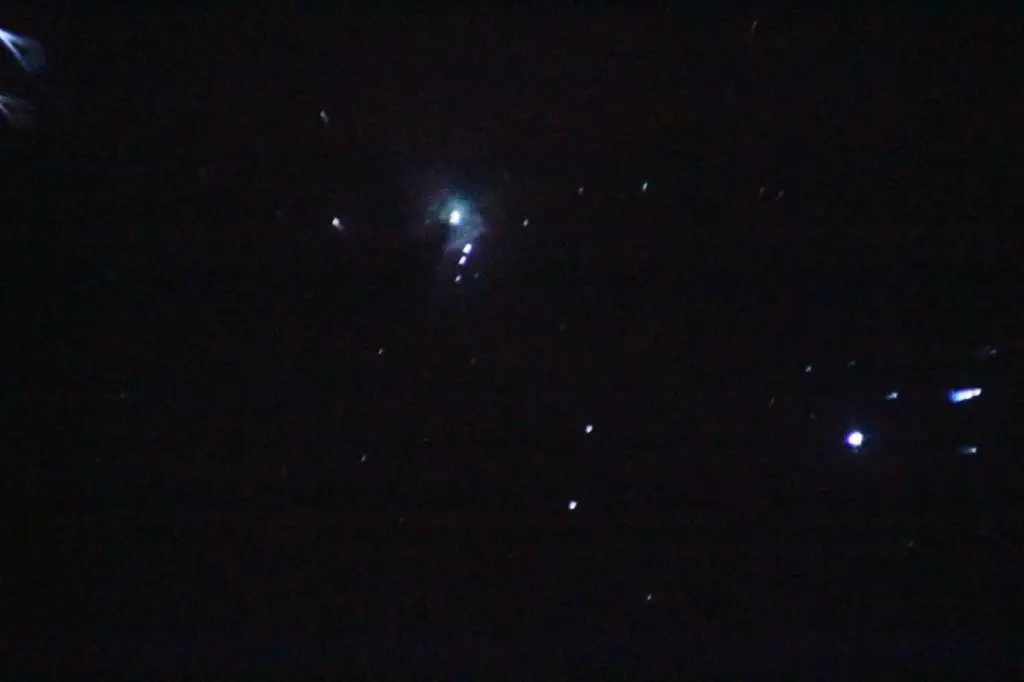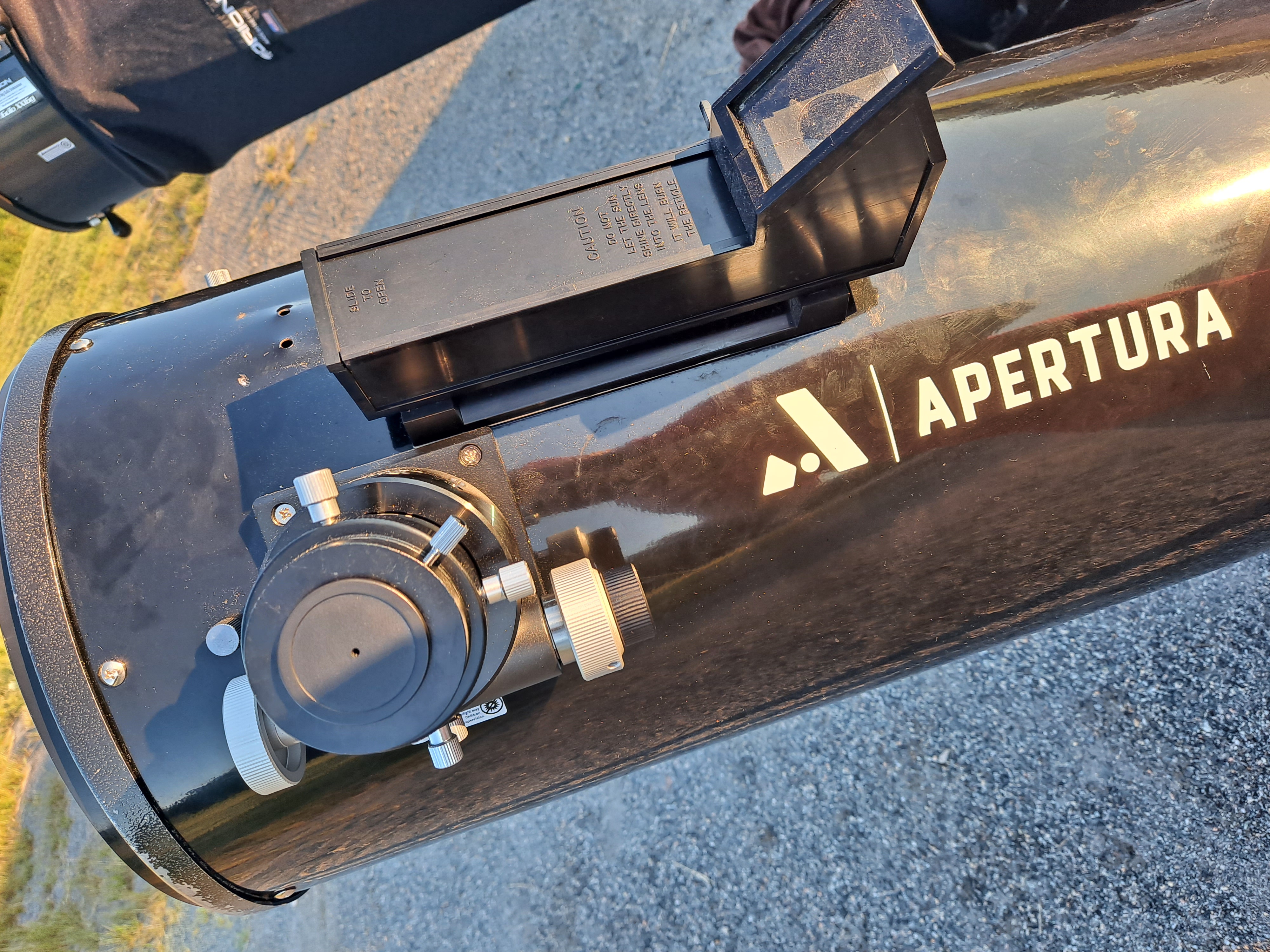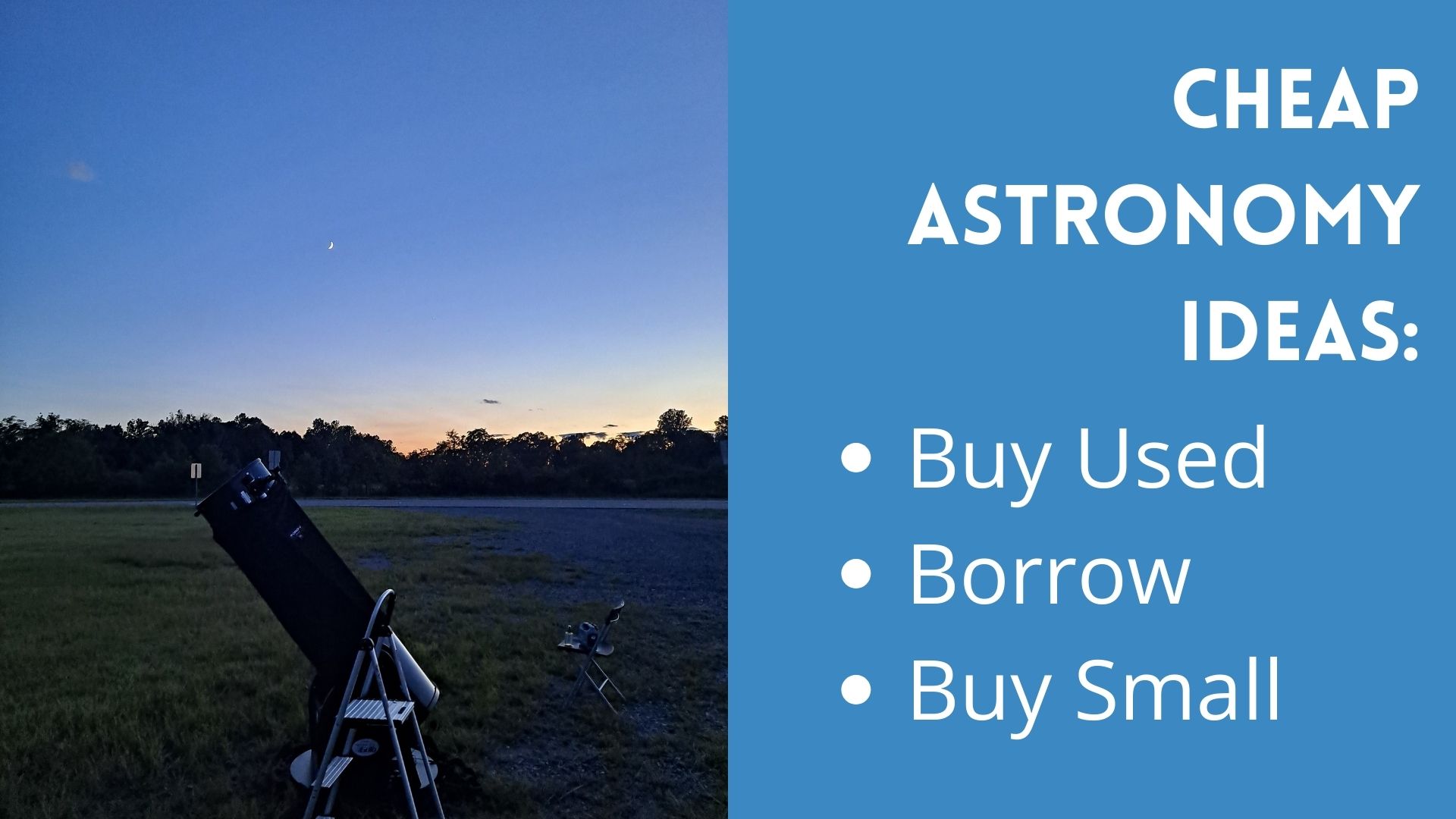It’s often said that astronomy is an expensive hobby. High-quality telescopes can cost thousands of dollars, and then there are eyepieces, filters, and countless other accessories to spend your money on.
If you plan on taking pictures, the list gets even longer.
But you don’t always need to spend a lot of money to enjoy astronomy.
In fact, sometimes it’s better not to buy a telescope at all, especially when you’re not sure how much time and money you will want to invest. Telescopes are expensive for a reason.
If I had to guess, I would say at least half the telescopes that people buy never get used more than once!
In this article, we’ll look at five ways you can enjoy astronomy without buying an expensive telescope.
1. Naked-Eye Astronomy
Here is a method which costs $0 and predates all recorded history: go outside after dark and look up.
This is the best way to learn the constellations, with the aid of a planisphere or all-sky chart. If you can get away from urban skyglow and moonlight, the universe opens up to you. The sky becomes three-dimensional, with the Milky Way arching high above during summer nights in the northern hemisphere.
In winter, Orion is an arresting sight. Star clusters, bright nebulae, and even the Andromeda Galaxy can be spotted with practice.
Your naked eyes may not have the light-gathering capacity of a telescope, but they have the widest true field of view.

There are also some spectacles which favor naked-eye observation.
Conjunctions of the moon and planets, meteor showers, lunar eclipses; experienced astronomers know that a telescope is not required or even recommended for such events.
2. Binocular Astronomy
Dust off those old birdwatching binoculars and take them out on a clear night.
With greater light-gathering capacity than your eyes alone, and a wider true field of view than a telescope, they can be the ideal introduction to magnified astronomy.
Get a hold of some star charts and see if you can find any Messier objects with them. Many of the brighter ones are visible if your skies are reasonably dark.
A few objects even directly favor the wide field of binoculars; try the Pleiades, the Beehive Cluster, and if your skies are dark enough, the Andromeda Galaxy.

There are few experiences more satisfying than lying back in a lawn chair under dark, moonless skies and sweeping the Milky Way with a pair of binoculars.
With no setup time, and extreme portability, binocular astronomy is an accessible way to get into the hobby.
Nevertheless, it takes practice to aim binoculars, especially in the night sky with no easy landmarks for reference. It can also be tiring to hold them up for extended periods, but tripods are available to assist you.
You can check out these astronomy binoculars and these binocular tripods on Telescopes.com to get in the game.
There are affordable adapters that can be attached to a tripod you already own to make observing with binoculars more comfortable.
A used pair of binoculars may be found on ebay, thrift stores or other used marketplaces.
3. Armchair Astronomy
My passion for astronomy started with a good book. There is a lot to enjoy about astronomy just from reading excellent books.
As much as I love being out in the field, you can only learn so much by looking through a telescope, and this is where books, websites, and videos come into play.
I strongly recommend that everyone starts with an introductory book before delving into the world of telescopes. Turn Left at Orion and Nightwatch are both indispensable for beginners, filled with astronomical information, practical advice, and easy-to-use star charts.
Studying professional images of different targets and reading background info on them will also give you greater perception and appreciation when you do eventually get a telescope.
Astronomy is an immense area of study with many offshoots like astro-physics and cosmology.
There are excellent books to help the layperson grapple with difficult concepts; The Universe in a Nutshell springs to mind.
There are excellent books for kids and teens as well. The famous H. A. Ray’s The Stars, or Find the Constellations are good ones that Corey’s kids have enjoyed.
Wikipedia can be a useful resource for exploring topics of interest.
For the more visually inclined, there are quality Youtube channels posting weekly content on astronomy and physics. And of course, there are websites like Telescope Boss!
4. Join a Club
One of the best ways to learn about and enjoy astronomy without spending a bunch of money is to hang around others who already have.
Find out if there are any astronomy clubs or astronomical society chapters in your area and check their events schedule. They will often hold public observing sessions and other outreach events where you can have a chance to look through some telescopes and ask questions.
Amateur astronomers love talking about their hobby, so don’t be shy!
There may be opportunity to rent or borrow telescopes from the club. Becoming a member might even get you access to a private observatory.
5. Cheap Telescope Astronomy
After you have enjoyed astronomy in all the ways suggested, you may be ready to buy a telescope.
This is by far the most common way for beginners to enter the hobby: they set themselves a budget of around $200 and then search Amazon for a telescope.
The rising demand for telescopes has caused prices to climb, and nowadays I would generally consider anything around $300 or below as “cheap”.
It is my view, and the view of many other experienced amateurs, that such telescopes are generally not worth owning, and certainly not worth buying.
There are several reasons for this.
Cheap telescopes often come on flimsy mounts and tripods, making it hard to find and track objects. They come supplied with inferior, if not useless, accessories, such as short focal length eyepieces and barlow lenses which provide more magnification than the telescope can support. Even something as simple as aligning the finderscope may be difficult or impossible on a cheap telescope.
Such instruments are often easy to assemble but difficult to use, making them a poor choice for a beginner.
This doesn’t mean it’s impossible to get enjoyment out of a cheap telescope.
With a bit of determination, you can still see craters on the moon, the rings of Saturn, and the moons of Jupiter through practically any instrument.
Star clusters and bright nebulae are not out of the question.
As with any telescope, the enjoyment you get from it will depend on the effort you put in. But I have owned three cheap telescopes, and two of them were so poor that they went straight to the dump.
Even the Celestron Astromaster 114AZ, which is not exactly the cheapest of the cheap scopes, was bad enough that I was hesitant to even give it away for free.

The good news is that once you hit the $400 mark, things start looking a lot better.
Tabletop scopes like the Sky-Watcher Heritage 130P or the Orion Starmax 90mm will have better optics and accessories than any of the cheap models.
There are some decent refractors on alt-az mounts, like the Explore Scientific Firstlight 90mm. Once you hit $500, you are getting into Dobsonian territory, which will blow away these cheaper scopes in terms of performance and ease of use.
If you have spent time enjoying astronomy through research, naked eye astronomy, good books, youtube videos and binoculars you can be sure that you will enjoy astronomy over the long term.
We looked at a few ways you can get a telescope on the cheap and give some good alternatives in the linked post and we also have a handy guide for buying used telescopes that will be helpful.
Can you enjoy astronomy without a telescope?
As you can see, there are plenty of ways to enjoy astronomy without an expensive telescope.
In this hobby it is a good idea to take things slow and learn as you go. Buying an expensive telescope straightaway won’t make you better at astronomy.
Research your options, talk to people who have used the equipment you’re considering, and try to get out to a public viewing event if you can. The rest will follow.





